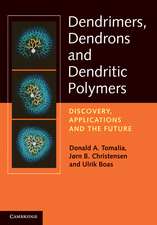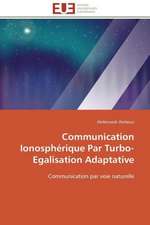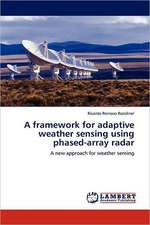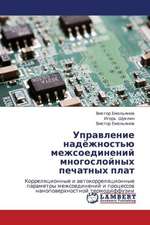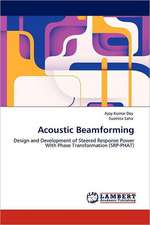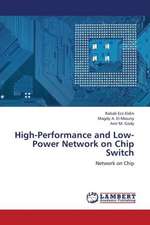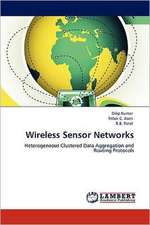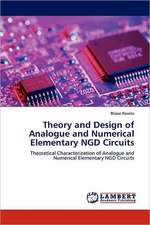Magnetic Bubble Technology: Springer Series in Solid-State Sciences, cartea 14
Autor A. H. Eschenfelderen Limba Engleză Paperback – iul 1981
Din seria Springer Series in Solid-State Sciences
- 18%
 Preț: 1225.94 lei
Preț: 1225.94 lei - 18%
 Preț: 1017.62 lei
Preț: 1017.62 lei - 15%
 Preț: 532.05 lei
Preț: 532.05 lei - 18%
 Preț: 944.51 lei
Preț: 944.51 lei -
 Preț: 541.47 lei
Preț: 541.47 lei - 18%
 Preț: 956.96 lei
Preț: 956.96 lei -
 Preț: 385.84 lei
Preț: 385.84 lei - 18%
 Preț: 1827.48 lei
Preț: 1827.48 lei - 15%
 Preț: 661.02 lei
Preț: 661.02 lei -
 Preț: 389.88 lei
Preț: 389.88 lei - 15%
 Preț: 639.59 lei
Preț: 639.59 lei - 15%
 Preț: 635.15 lei
Preț: 635.15 lei - 18%
 Preț: 896.21 lei
Preț: 896.21 lei - 15%
 Preț: 647.92 lei
Preț: 647.92 lei - 15%
 Preț: 651.34 lei
Preț: 651.34 lei - 18%
 Preț: 890.23 lei
Preț: 890.23 lei - 15%
 Preț: 640.55 lei
Preț: 640.55 lei - 15%
 Preț: 649.54 lei
Preț: 649.54 lei - 15%
 Preț: 645.60 lei
Preț: 645.60 lei - 15%
 Preț: 644.30 lei
Preț: 644.30 lei - 15%
 Preț: 653.79 lei
Preț: 653.79 lei - 18%
 Preț: 956.69 lei
Preț: 956.69 lei - 15%
 Preț: 637.59 lei
Preț: 637.59 lei - 23%
 Preț: 1043.42 lei
Preț: 1043.42 lei - 15%
 Preț: 639.08 lei
Preț: 639.08 lei - 15%
 Preț: 648.24 lei
Preț: 648.24 lei - 15%
 Preț: 637.46 lei
Preț: 637.46 lei - 15%
 Preț: 640.06 lei
Preț: 640.06 lei -
 Preț: 391.40 lei
Preț: 391.40 lei -
 Preț: 390.84 lei
Preț: 390.84 lei - 15%
 Preț: 638.57 lei
Preț: 638.57 lei - 18%
 Preț: 1006.06 lei
Preț: 1006.06 lei - 18%
 Preț: 730.79 lei
Preț: 730.79 lei - 15%
 Preț: 640.37 lei
Preț: 640.37 lei - 15%
 Preț: 643.65 lei
Preț: 643.65 lei - 18%
 Preț: 1231.01 lei
Preț: 1231.01 lei - 18%
 Preț: 950.21 lei
Preț: 950.21 lei - 15%
 Preț: 642.68 lei
Preț: 642.68 lei - 15%
 Preț: 640.55 lei
Preț: 640.55 lei - 18%
 Preț: 1229.10 lei
Preț: 1229.10 lei
Preț: 643.99 lei
Preț vechi: 757.63 lei
-15% Nou
Puncte Express: 966
Preț estimativ în valută:
123.23€ • 131.77$ • 102.74£
123.23€ • 131.77$ • 102.74£
Carte tipărită la comandă
Livrare economică 18 aprilie-02 mai
Preluare comenzi: 021 569.72.76
Specificații
ISBN-13: 9783540107903
ISBN-10: 3540107908
Pagini: 368
Ilustrații: XVI, 348 p. 56 illus.
Dimensiuni: 155 x 235 x 19 mm
Greutate: 0.52 kg
Ediția:2nd corr. and updated ed.
Editura: Springer Berlin, Heidelberg
Colecția Springer
Seria Springer Series in Solid-State Sciences
Locul publicării:Berlin, Heidelberg, Germany
ISBN-10: 3540107908
Pagini: 368
Ilustrații: XVI, 348 p. 56 illus.
Dimensiuni: 155 x 235 x 19 mm
Greutate: 0.52 kg
Ediția:2nd corr. and updated ed.
Editura: Springer Berlin, Heidelberg
Colecția Springer
Seria Springer Series in Solid-State Sciences
Locul publicării:Berlin, Heidelberg, Germany
Public țintă
ResearchCuprins
1. Introduction to Magnetic Bubbles.- 1.1 What Are Magnetic Bubbles?.- 1.2 Available Bubble Materials.- 1.3 How Can Bubbles be Manipulated?.- 1.4 Why Are Bubbles of Practical Interest?.- 1.5 A Typical Storage Device.- 1.6 Why Are Bubbles of Scientific Interest?.- 1.7 Scope and Organization of the Book.- 1.8 History.- 1.9 Summary.- 2. Static Properties of Magnetic Bubbles.- 2.1 Fundamental Characteristics of the Bubble Film.- 2.2 Bubble Domain Configurations.- 2.3 Summary.- 3. Dynamic Properties of Magnetic Bubbles.- 3.1 Motion of a Wall.- 3.2 Motion of a Bubble.- 3.3 Summary.- 4. Basic Permalloy-Bar Bubble Devices.- 4.1 Propagation.- 4.2 Other Functional Elements.- 4.3 Total Chip Performance.- 4.4 Device Scaling.- 4.5 Summary.- 5. Other Bubble Device Forms.- 5.1 Two-Level Permalloy Bar.- 5.2 Charged-Wall Bubble Devices.- 5.3 Bubble Lattice Devices.- 5.4 Current Sheet Devices.- 5.5 Summary.- 6. Bubble Materials.- 6.1 The General Approach to Tailoring the Properties of Bubble Materials.- 6.2 Garnets.- 6.3 Hexaferrites.- 6.4 Amorphous Materials.- 6.5 Orthoferrites.- 6.6 Summary.- 7. Device Chip Fabrication.- 7.1 Crystal Growth.- 7.2 Substrate Preparation.- 7.3 Film Growth.- 7.4 Fabrication of Device Structure.- 7.5 Summary.- 8. Chip Packaging.- 8.1 The Storage Unit.- 8.2 The Storage Module.- 8.3 Limitations on Module Size.- 8.4 Data Integrity.- 8.5 Module Testing.- 8.6 Summary.- 9. Applications.- 9.1 Useful Features of Bubble Devices.- 9.2 General Purpose Storage Units.- 9.3 Storage Hierarchies.- 9.4 Special Purpose Applications.- 9.5 Summary.- 10. Future Prospects.- 10.1 Dependencies of the Module Attributes.- 10.2 Constraints on Active Chip Area.- 10.3 Constraints on Device Cell Density.- 10.4 Constraints on Operating Frequency.- 10.5 Loop Length.- 10.6 Areas for FutureResearch.- 10.7 Summary.- 11. Recent Developments.- 11.1 Contiguous Disk Bubble Devices.- 11.2 Permalloy Bar Storage Chips.- 11.3 Garnet Uniaxial Anisotropy, Ku.- 11.4 Summary.- References.



